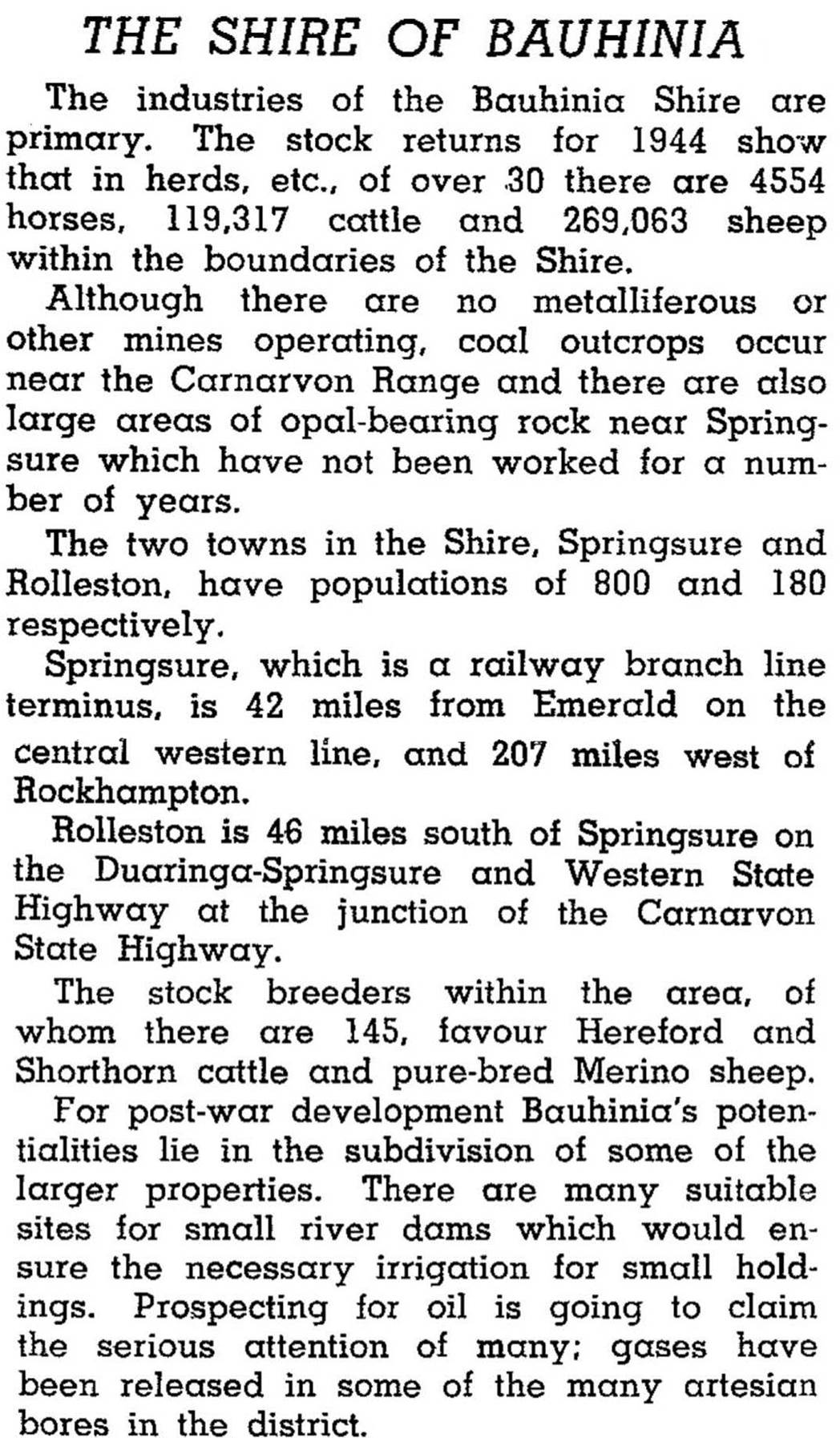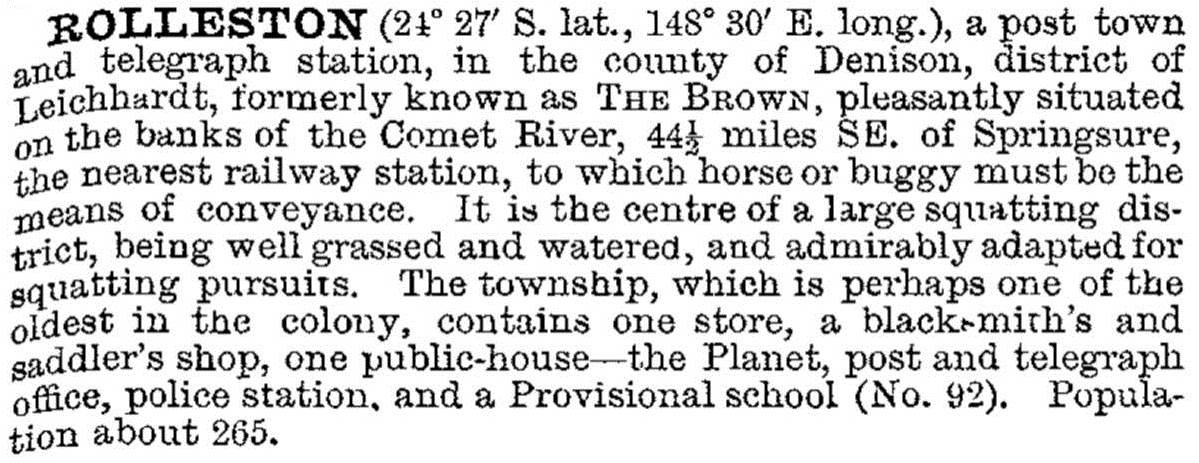Bauhinia Shire, an area of 24,558 sq km and generally 350 km west of Gladstone, was amalgamated with the Duaringa, Emerald and Peak Downs Shires in 2008 to form the Central Highlands Regional Council. The former shire was bordered by Expedition Range to the east (named by Leichhardt in 1844) and the Salvator Rosa and Claude ranges to the south and west (named by Mitchell in 1846), and contained the Nogoa River valley, consisting of undulating agricultural and grazing land.
Pastoral occupation did not begin until the late 1850s, but proceeded quickly, with much of the area taken up within five years. The Springsure township (the former shire's administrative centre) had emerged by 1864, and is described in a separate entry.
In 1879 the Bauhinia local-government division was proclaimed. Bauhinia is a tree or climber comprising about 500 species, of which six are indigenous to Australia. It was named after Jean and Gaspard Bauhin, sixteenth century herbalists. The Australian species are common throughout northern Australia, with red or yellow flowers adorning a well-shaped tree. They are used for stock feed and for ornamental and street-planting purposes.
Beginning with a population of about 1420 people, the shire increased to 2003 by 1901. There was then a long decline, with the 1901 figure not reached again until 1966. Drought and spear grass both affected livestock adversely, frustrating the pastoral industry. Pest weeds, burr and prickly pear incurred eradication costs and sapped productivity. The ranges, meawhile, defied extensive clearing until mechanisation overcame the eastern brigalow areas in the years after World War II.
Agriculture emerged as a profitable diversification: sorghum plantings went from a few hundred to 20,000 acres during the 1950s-70s, and wheat, safflower and sunflower were widely grown. This contrasts markedly with the 1946 Australian Blue Book's description of a predominantly pastoral shire:

Some of the ranges throughout the Shire are now national parks: Salvator Rosa, Mount Zamia and, best known, Carnarvon Gorge. The Carnarvon Creek leads to extensive Aboriginal cave paintings, and there is accommodation near the park. Tourists, however, tend to access the park from the south and east, rather than through Springsure.
The Shire's other town was Rolleston, named after Christopher Rolleston (1817-88), New South Wales Registrar General and part owner of the Springsure Pastoral Station (1860). Rolleston has a general store, hotel, caravan park and a primary school (1871). Rolleston was described in the 1903 Australian handbook:

In 1993 Bauhinia Shire had 33,000 beef cattle, 3150 lambs (no sheep), over 900,000 ha of cereal crops and over 43,000 ha of other crops, including fodder. Its census populations were:
| Census Date | Population |
|---|---|
| 1911 | 1841 |
| 1933 | 1706 |
| 1954 | 1633 |
| 1971 | 2319 |
| 1981 | 3086 |
| 2001 | 2575 |
| 2006 | 2189 |
Bauhinia Shire Council, Shire of Bauhinia: centenary of local government, Emerald, Central Queensland Publishing Co, 1979
Springsure entry




























































































